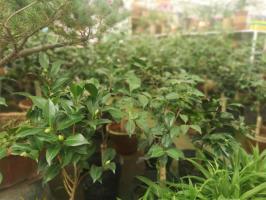Is Salt Residue on Terracotta Pots Bad for Plants?
Terracotta pots are a popular choice among gardeners due to their aesthetic appeal and ability to regulate soil moisture. However, one common issue with terracotta pots is the buildup of salt residue on the surface, which raises a question: is salt residue on terracotta pots bad for plants?
Understanding Salt Residue
Salt residue is a natural occurrence that results from the buildup of minerals in the soil, fertilizers, or water used to irrigate plants. Over time, these minerals accumulate on the surface of the pot, creating a visible white residue. While the presence of salt residue is not necessarily toxic to plants, it can affect their growth and health in several ways.
Effects on Plant Growth and Health
Salt residue on terracotta pots can affect plant growth and health in several ways. First, it can cause soil to become too alkaline, which can prevent plants from absorbing essential nutrients, such as iron, zinc, and manganese. Second, it can interfere with the plant's ability to absorb water, leading to dehydration and wilting. Third, it can cause salt burn, which appears as yellow or brown patches on the leaves of the plant and can lead to stunted growth or even death.
Preventing Salt Residue on Terracotta Pots
Preventing salt residue buildup on terracotta pots is essential to maintain the health and growth of plants. There are several ways to prevent salt residue buildup, such as:
Watering plants with distilled water to reduce the accumulation of minerals
Using a good-quality potting mix that contains organic matter to help regulate soil pH
Using natural fertilizers, such as compost, to reduce the release of excess minerals
Regularly cleaning the surface of the pots with a damp cloth or soft brush
How to Remove Salt Residue
If salt residue has already accumulated on the surface of the terracotta pot, it is essential to remove it as soon as possible to prevent damage to the plant. There are several methods for removing salt residue:
Scrubbing the surface of the pot with a mixture of vinegar and water
Soaking the pot in a solution of water and lemon juice or white vinegar
Using a commercial pot cleaner specifically designed for terracotta pots
Regardless of the method used, it is crucial to rinse the pot thoroughly with clean water after cleaning to remove any traces of the cleaning solution.
Conclusion
In summary, while the presence of salt residue on terracotta pots is not necessarily toxic to plants, it can affect their growth and health in several ways, making it essential to prevent and remove it as soon as possible. By taking proper care of terracotta pots and implementing preventive measures, gardeners can ensure the health and beauty of their plants for years to come.

 how many times do yo...
how many times do yo... how many planted tre...
how many planted tre... how many pine trees ...
how many pine trees ... how many pecan trees...
how many pecan trees... how many plants comp...
how many plants comp... how many plants can ...
how many plants can ... how many plants and ...
how many plants and ... how many pepper plan...
how many pepper plan...






























